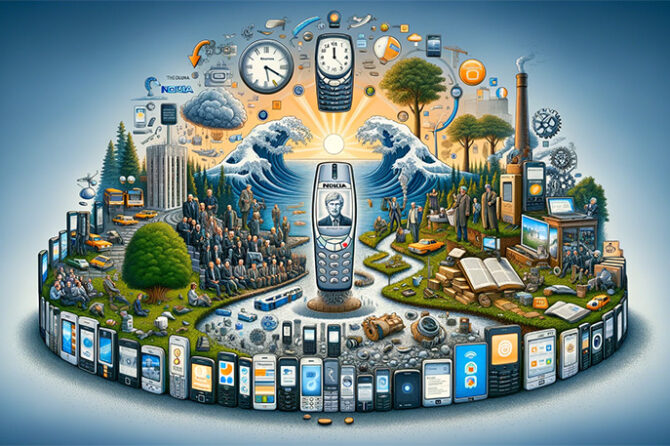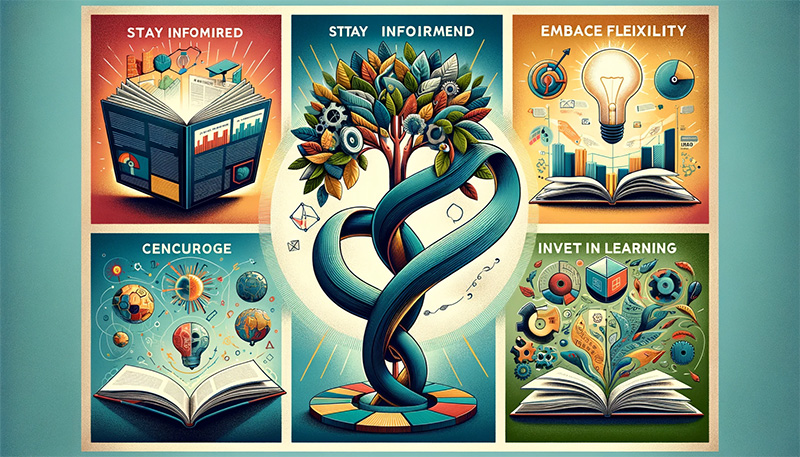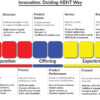
Introduction: The Fall of a Titan
In 2014, a poignant moment captured the essence of a corporate tragedy. Stephen Elop, Nokia’s CEO, stood at a press conference, teary-eyed, and delivered a line that resonated deeply in the business world: “We didn’t do anything wrong, but somehow, we lost.” Nokia’s fall from grace wasn’t due to scandal or gross incompetence; it was a harrowing tale of a giant’s failure to adapt to a rapidly changing landscape.
The Roots of Nokia’s Downfall:
Nokia’s story serves as a stark reminder of the perils of stagnation. Their core business wasn’t flawed; their fatal misstep was overlooking the seismic shifts in technology. The advent of the touchscreen and the app ecosystem caught Nokia off guard. Committed to their Symbian OS, they watched as Apple and Android quickly adapted to and then led the new market rhythm.
Lessons from Nokia’s Narrative:
Nokia’s experience offers critical lessons for businesses and individuals alike in a world that never ceases to evolve.
- Lifelong Learning as a Necessity
Lesson: In a world where knowledge constantly evolves, continuous learning is not just an asset; it’s a necessity. Nokia’s downfall was rooted in a sustained disconnect from market evolution and customer needs.
Quote: “The only source of knowledge is experience.” – Albert Einstein
Example: Kodak, another industry giant, suffered a similar fate due to its reluctance to embrace digital photography, despite inventing the first digital camera.
2. Embracing Change as Opportunity
Lesson: Resistance to change can be more damaging than the change itself. Nokia’s reluctance to embrace new technologies was a key factor in its decline.
Quote: “The only thing constant in life is change.” – Heraclitus
Example: Blockbuster’s failure to adapt to the digital streaming model, unlike its competitor Netflix, led to its downfall.
3. Respecting the Competition
Lesson: Underestimating competitors can lead to strategic blind spots. Nokia’s focus on its own strengths led to a failure to recognize the threat posed by its rivals’ innovations.
Quote: “Keep your friends close, but your enemies closer.” – Sun Tzu
Example: BlackBerry, once a market leader, underestimated the appeal of consumer-friendly smartphones, losing its dominance to more agile competitors.
4. The Imperative of Continuous Improvement
Lesson: Complacency can quickly turn into obsolescence. Nokia’s inability to innovate and improve continuously contributed to its downfall.
Quote: “The greatest danger for most of us is not that our aim is too high and we miss it, but that it is too low and we reach it.” – Michelangelo
Example: Sears, once a retail giant, failed to innovate and keep up with changing retail trends, eventually leading to bankruptcy.
Summary: Embrace Change, Adapt, and Thrive
Nokia’s story is a sombre reminder of the critical need to adapt in an ever-changing world. It’s a call to action for continuous learning, embracing change, understanding competition, and relentless improvement. In today’s dynamic business landscape, your current advantage could quickly become tomorrow’s liability.

Tips and Tricks for Staying Ahead
- Stay Informed: Keep abreast of industry trends and technological advancements.
- Embrace Flexibility: Cultivate an organizational culture that embraces change and innovation.
- Encourage Creativity: Foster an environment where new ideas are welcomed and explored.
- Invest in Learning: Provide opportunities for continuous learning and skill development.
Guiding Books and Reference Articles
“Who Moved My Cheese?” by Spencer Johnson: A motivational book that illustrates the importance of adapting to change.
“The Innovator’s Dilemma” by Clayton Christensen: Explores how successful companies can fail if they don’t evolve.
“Good to Great” by Jim Collins: Discusses why some companies make the leap to greatness and others don’t.
Harvard Business Review case studies on Nokia: In-depth analysis of Nokia’s strategic decisions and their outcomes.
Nokia’s tale is a sobering reminder of the relentless pace of change in today’s world. Don’t wait for change to force your hand; instead, learn, adapt, and move to the rhythm of change. Remember, the canvas of success is dynamic, and the future belongs to those who are prepared to paint it anew.
Prof. Dr. Prahlada N. B
30 December 2023
Doha, Qatar.

















Leave a reply